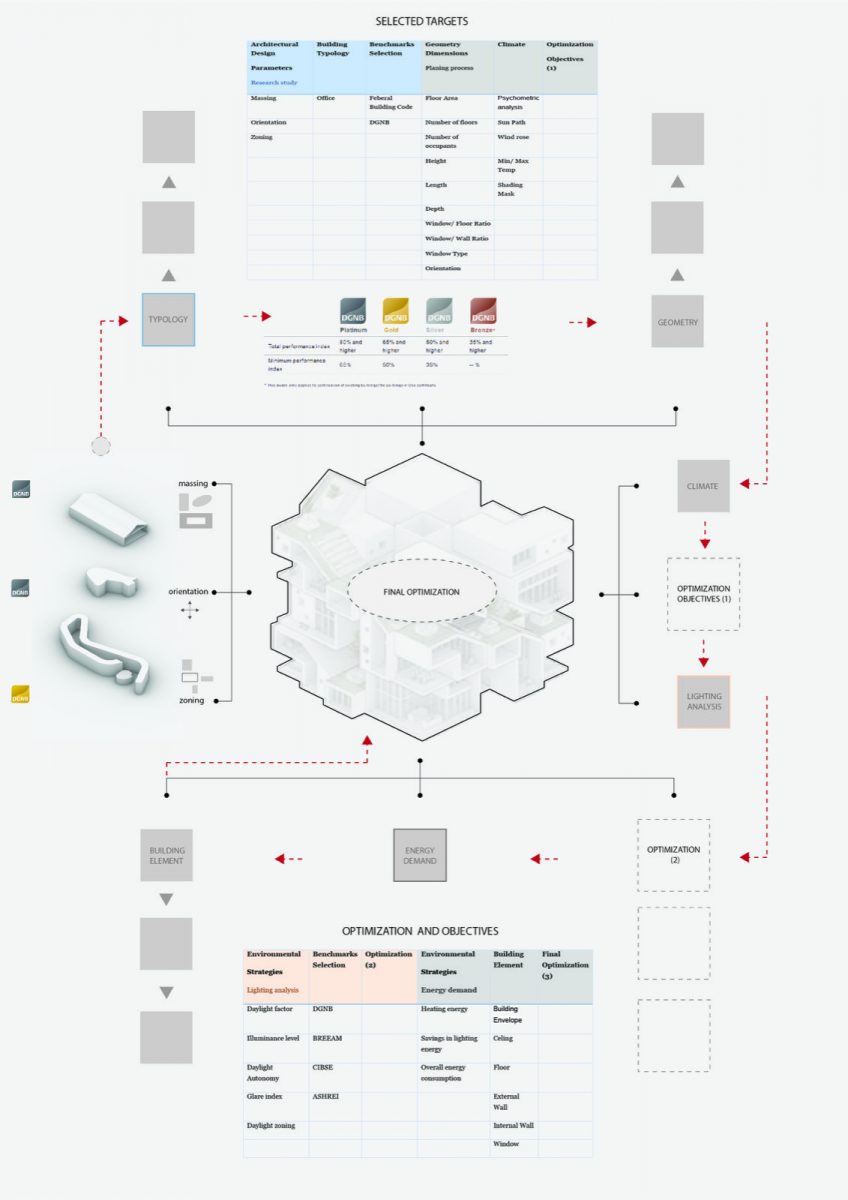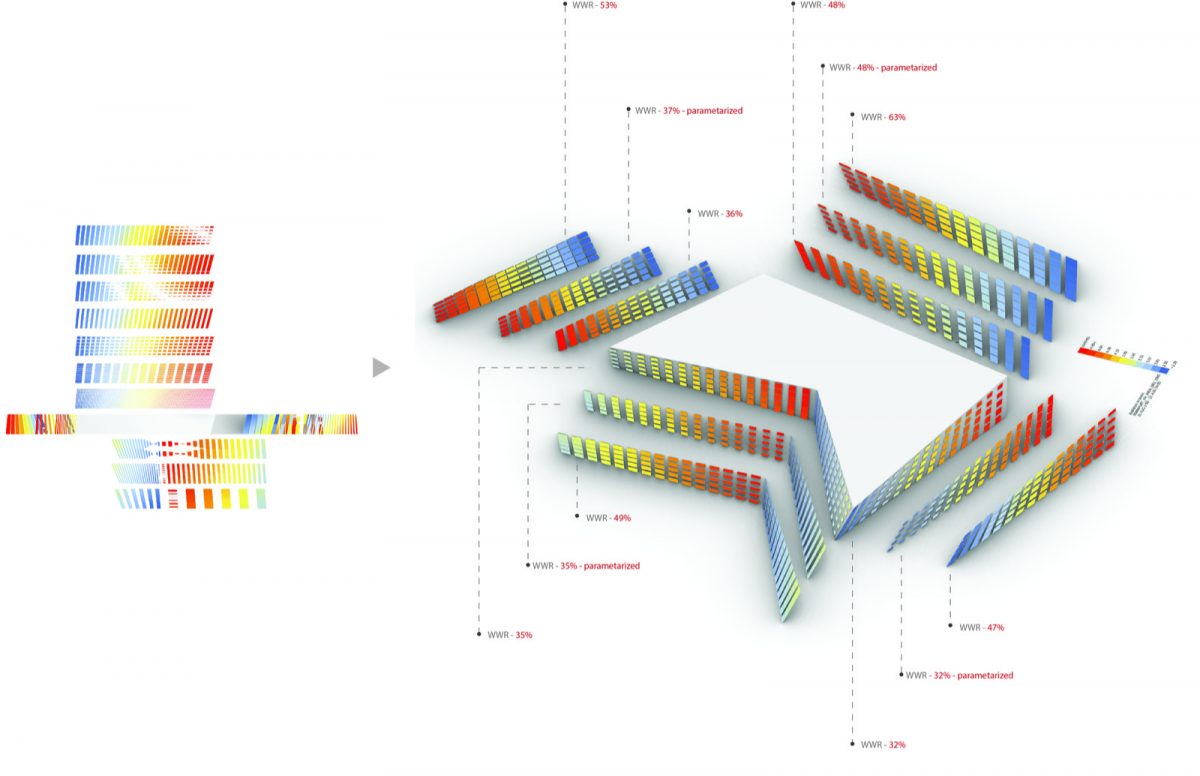Optimisation Techniques
[Thesis developed in collaboration with Arup]
Performance is becoming an essential driving force behind design decisions with the increasing demand for sustainable design and green buildings. In condition with modern environment and society, the environmental form-finding optimisation built upon performance-oriented environmental design operates environmental implementation data to optimise the architectural form. Its significance lies in dealing with the relations between architecture and environment and designing with ecological sustainability. Computational technology has evaluated building performance to allow architects to integrate performance analysis into the design system. Comprehensive optimisation of various implementations of buildings involves computer-assisted development techniques that create a performance as a benchmark for driving design. This research proposes a building optimisation process to help designers evaluate daylighting, view analysis, and energy performance in office buildings. Climate Studio software generates optimised design options and understands the relationship between computational design for architectural form and environmental evaluation. The study refers to the guidelines and performance metrics of the latest DGNB (German Sustainable Building Council). The proposed performance optimisation method utilises various tools and technologies, including parametric design and building simulation modelling. Galapagos Genetic Algorithms identifies design options with optimal energy and daylighting performance. The study’s purpose is to focus on the process and suggest a multi-objective optimization that allows finding the best solutions for massing and parametric façade — applying Grasshopper Ladybug radiation analysis as a principal and key input for the form-finding results. Computational architecture has reached a high complexity with almost everything possible to produce. However, the question related to the complexity is, for what are these innovative strategies applied? This thesis explained the purpose of combining the computational transformations in Grasshopper with the most crucial factor that we must consider – environmental performance.
Keywords: Optimisation techniques, Galapagos Genetic Algorithm, Environmental Form Finding, Climate Studio Evaluation, German Sustainable Building Council criteria















